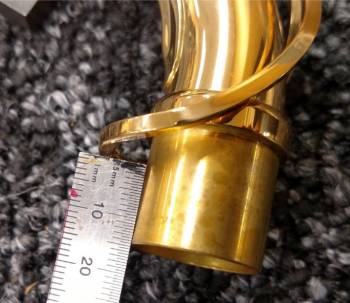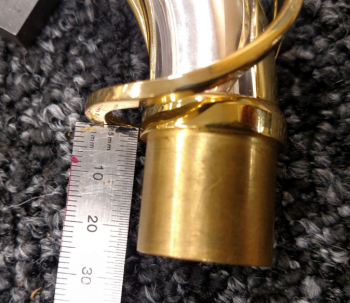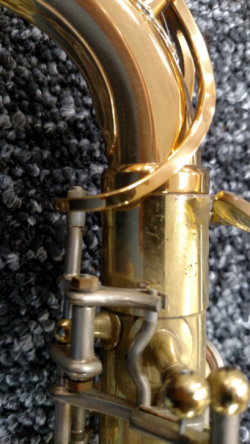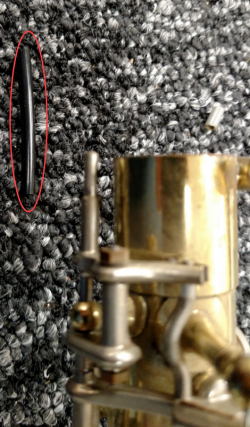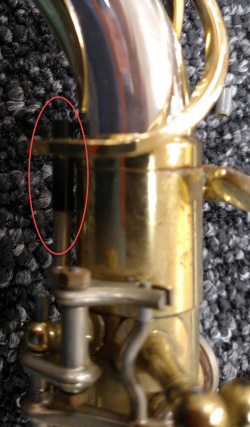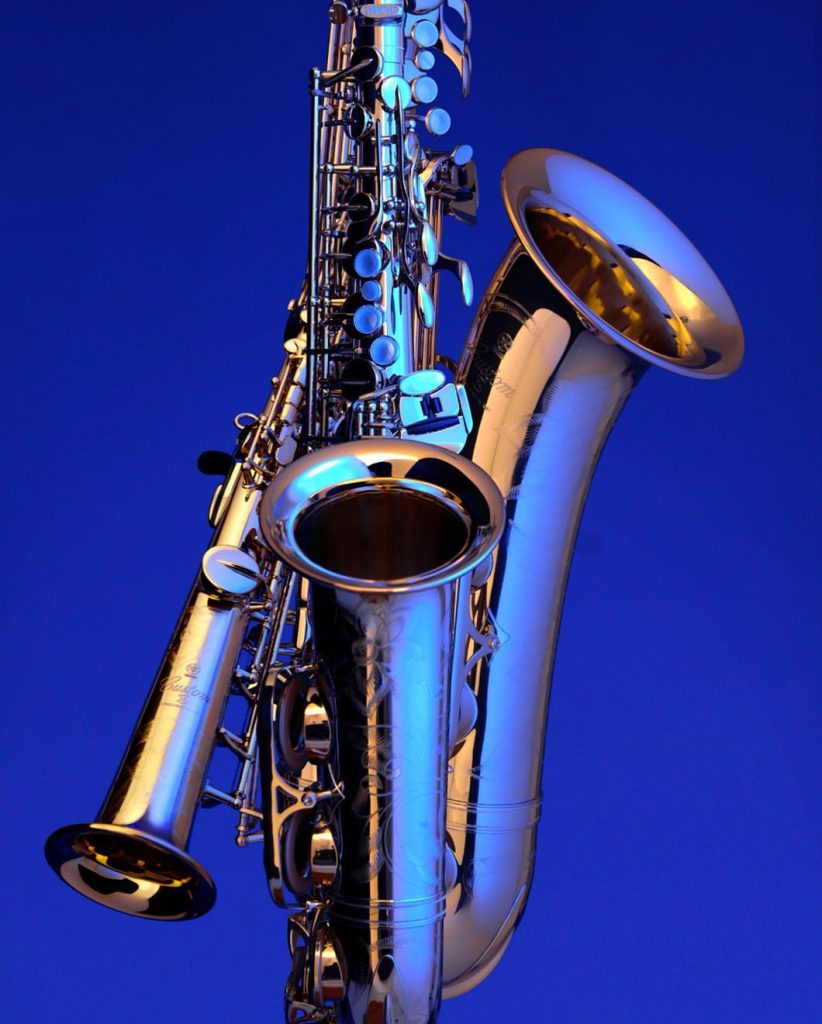Yamaha Saxophone Neck Compatibility
The differences between new design and original design.
Yamaha saxophones have been in production for many years and numerous design changes have been made to better our instruments. As a result, however, information is sometimes needed to fit a new or different neck to some older instruments. Here are some tips on how to identify and address these differences.
As shown in these images, when a current neck is used on some older model saxophones, the octave mechanism (floating lever) cannot reach high enough to actuate the neck octave key. (These images are that of an alto, but it is the same for a tenor.)
The tenon diameter on the older and the newer design is the same, although some final fitting by a qualified technician may be necessary, as in any neck change. However, the neck register key contact point is lower on the original design.
A simple extension can be made by replacing the plastic silencer tube with a longer piece of vinyl or other tubing. This allows the artist to evaluate the playing characteristics of the neck. Once the neck is selected, a more permanent extension may be made from brass stock and silver-soldered to the body octave key, if desired.
The chart below presents an overview of the models (past and present) that are equipped with the different design styles. All current Yamaha “Custom” branded aftermarket necks (such as the C1, E1, and V1) use the new design neck register key.
| ALTO AND TENOR SAXOPHONES | |
| Original Design | New Design |
| YAS/YTS-875 | |
| YAS/YTS-875EX | |
| YAS-875EXII | |
| YAS/YTS-82Z | |
| YAS/YTS-82ZII | |
| YAS/YTS-62 (1980-2002) | YAS/YTS-62 (2002-present) |
| YAS/YTS-61 | |
| YAS/YTS-52 | |
| YAS/YTS-475 | YAS/YTS-480 |
| YAS/YTS-300AD | |
| YAS/YTS-200AD | |
| YAS/YTS-26 | |
| YAS/YTS-23 | |
| YAS/YTS-21 |
Click here for more information about Yamaha saxophones.










